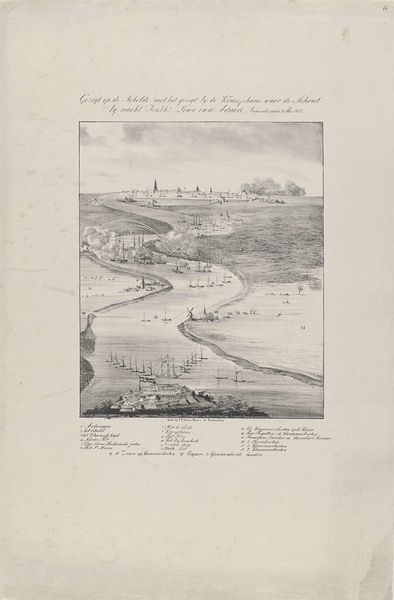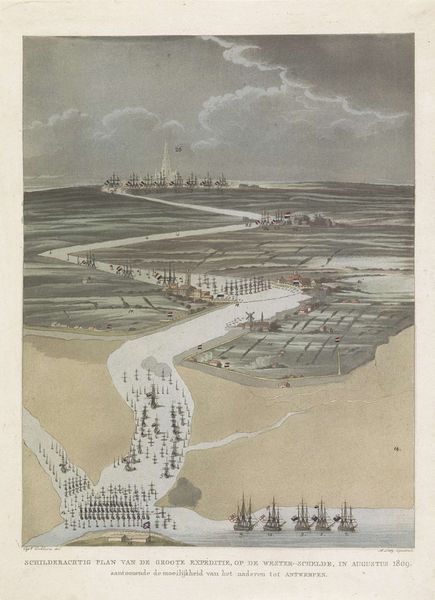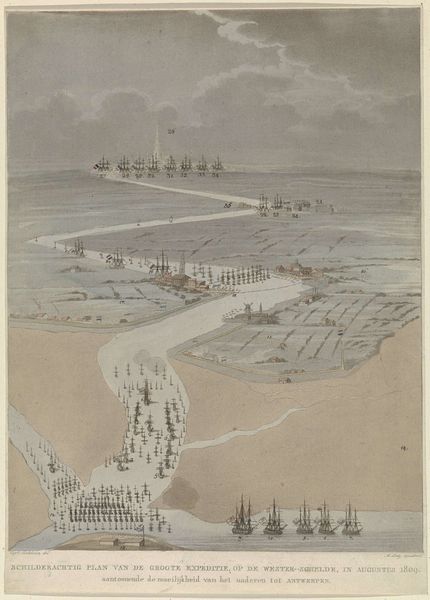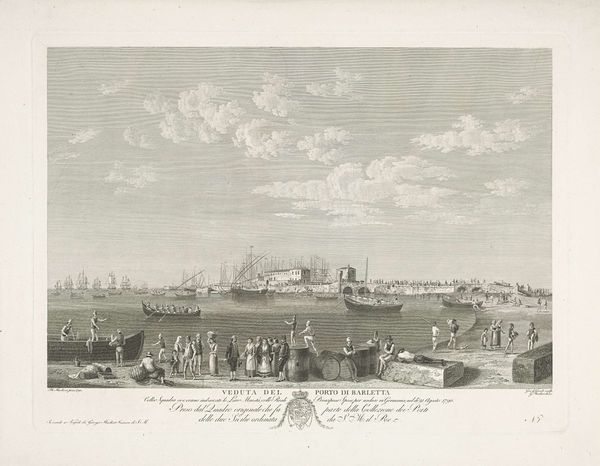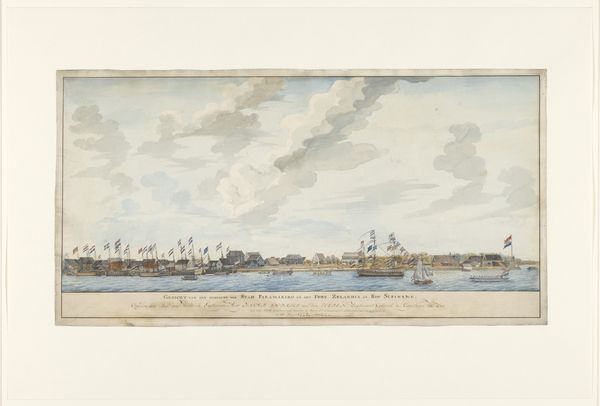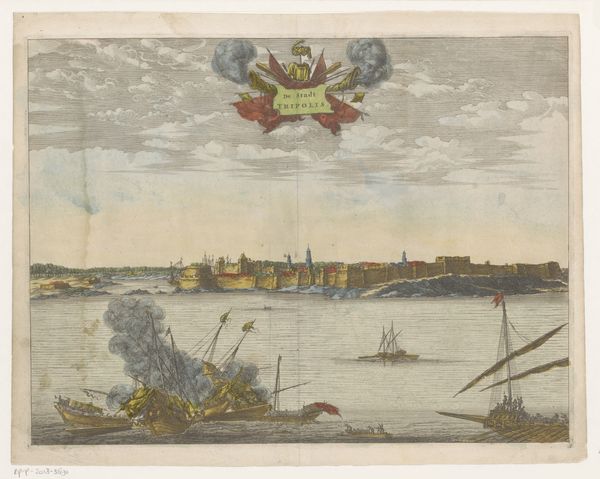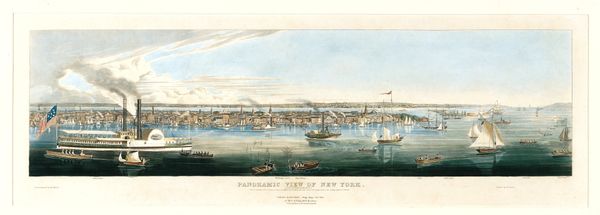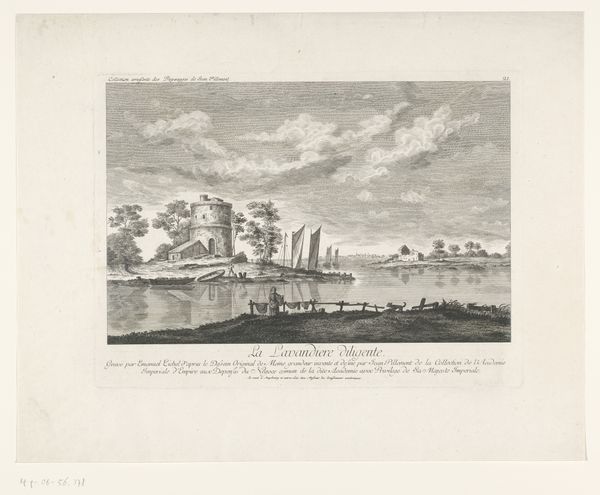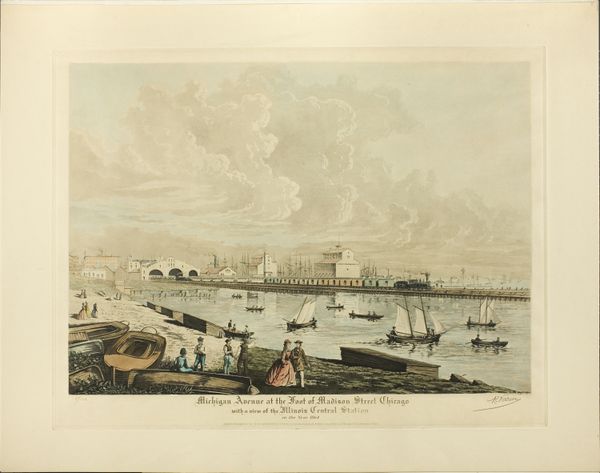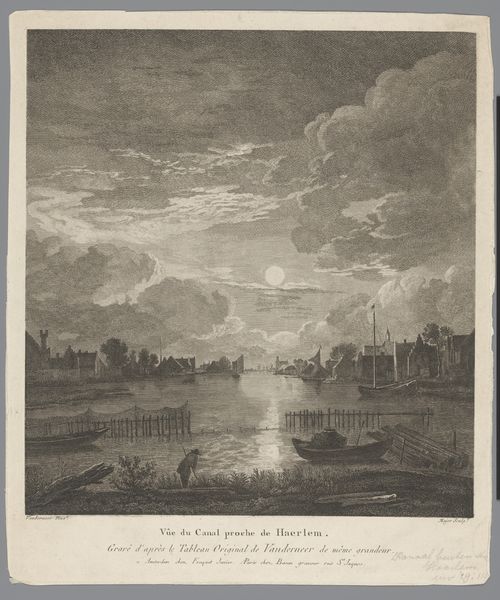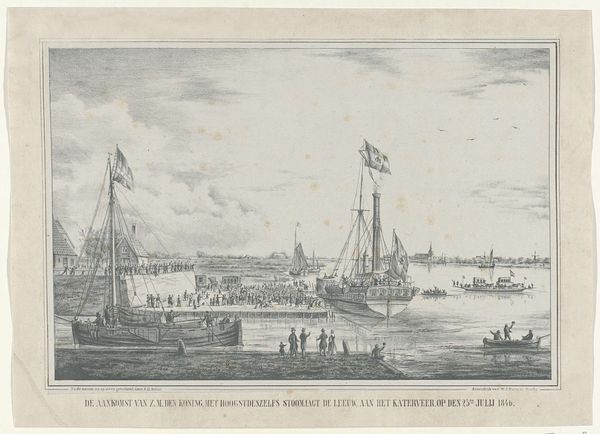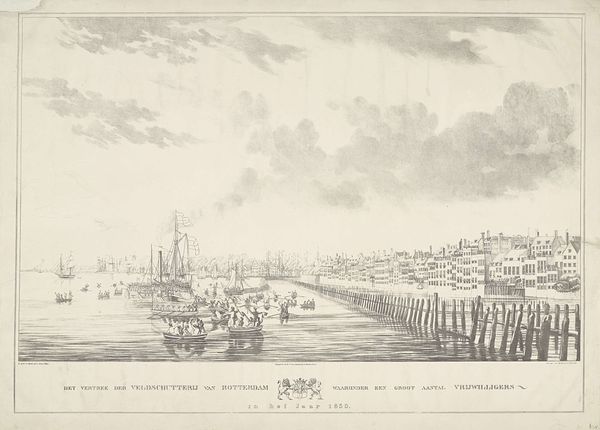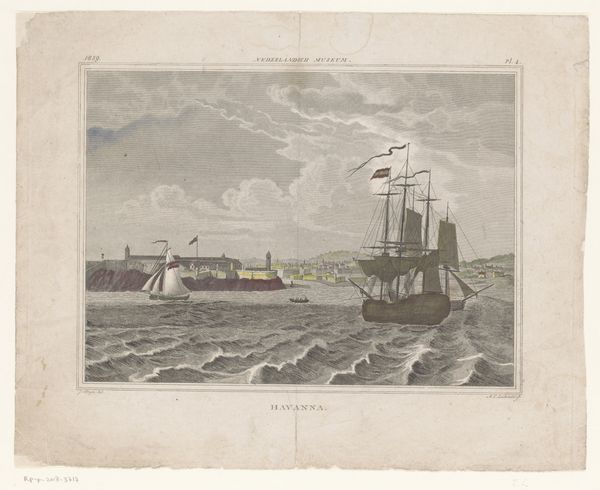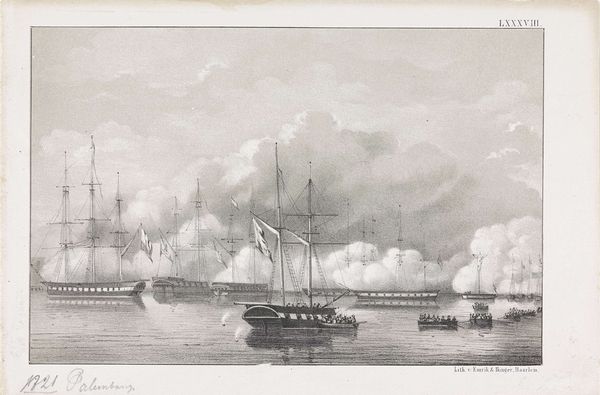
drawing, print, watercolor
#
drawing
# print
#
landscape
#
watercolor
#
cityscape
#
history-painting
#
watercolor
Dimensions: height 377 mm, width 295 mm
Copyright: Rijks Museum: Open Domain
Curator: Here we have a piece titled "Loop van de Schelde van Fort Bath tot Antwerpen," dating back to 1832-1833, and created by J.B. Clermans. It's a watercolor print offering a bird's-eye view of the Scheldt River. Editor: My first thought is how this map feels like a stage, or rather, a meticulously designed set. There's a deliberate flattening of perspective, making everything—ships, towns, the river itself—read almost as symbols arranged for observation. Curator: Absolutely. The strategic arrangement allows us to analyze the structural relationships between the key locations. Note the deliberate curves of the river itself – they almost choreograph the visual movement from Fort Bath upwards toward Antwerpen, creating a deliberate visual rhythm. Editor: Yes, the river functions as a unifying symbol, a kind of lifeblood connecting these various points. We see those little ships scattered along its course. Given that Antwerp was a contested territory in this period, these ships would surely evoke a sense of movement, commerce, but also the omnipresent potential for conflict and defense. Curator: Indeed, these symbolic echoes also reveal an underlying duality. Water, so vital to Antwerp's commerce, is here also presented as a zone of military tension. Consider the way Fort Bath anchors the bottom, its stark geometry in direct contrast to the winding river, symbolizing control. Editor: I'm also drawn to how the artist balances precision with expressiveness. While the locations are mapped with care, the colors feel delicate, evocative. The hazy sky imbues the scene with a sense of nostalgia. It’s a past world filtered through memory, softened and perhaps romanticized. The inclusion of windmills are symbolic, evoking sentiments of prosperity but also change with its association to innovation and commerce. Curator: A key to grasping this artwork’s lasting power lies precisely in this interplay. The topographical precision meets an evocative treatment, achieving structural balance within a visual narrative. It prompts consideration about power, geography, and the human hand. Editor: Agreed. Reflecting on it, the watercolor invites us to traverse this historical landscape, seeing it both for its material composition and symbolic resonances.
Comments
No comments
Be the first to comment and join the conversation on the ultimate creative platform.
